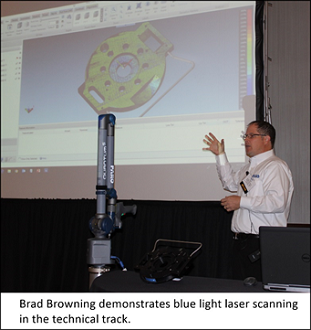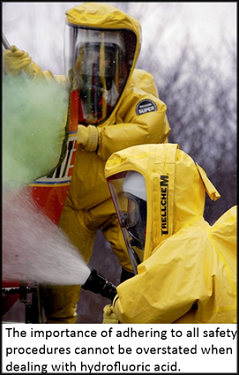The VMA Knowledge Forum, Part One: Technology at the Forefront
The first VMA Valve Industry Knowledge Forum, April 11-13 in Savannah, GA, provided a potpourri of topics for valve industry professionals from all disciplines.
#VMAnews #automation
Dr. Thomas Kevin Swift, chief economist & managing director of the American Chemistry Council (ACC) opened day one of the Technical track with a keynote looking toward a promising future for the petrochemical industry.
There are nearly 315 chemical projects worth $188 billion being planned in the U.S., and 62% of those projects are foreign investment or include a foreign partner. Swift predicted that as the manufacturing sector strengthens, specialty chemicals would also have a good future.
He also predicted that, with global integration and renewed competitiveness, U.S. exports will gain. He also anticipated that, with the Tax Cut and Jobs Act (TCJA), business investment could surge in 2019. Additionally, low feedstock prices thanks to U.S. shale gas will foster new greenfield investment, generating new business, jobs and tax revenues resulting in this $271 billion per year industry having higher growth than would otherwise occur.
In his address, Brad Livingston, the survivor of a horrific workplace accident, provided Manufacturing track attendees with a dramatic example of what can happen if you take shortcuts with workplace safety. But the importance of being passionate about safety was not limited to this presentation.
Mark Fucich, founder of HF Alkylation Consultants, shared the challenges of supplying valves to hydrofluoric (HF) alkylation units. There are only 52 units in the U.S., and HF alkylation takes up only about 5% of the total footprint of a refinery, but it is a serious 5% because it’s a hazardous chemical. “The cost of failure of valves in this space is extreme,” said Fucich. “Hydrofluoric acid is so intense and dangerous, it’s important to bring the reality of the consequences to the forefront.”
In his presentation, Tony Smart, senior mechanical engineer of Shell Global shared the staggering facts of oil and gas project budget and schedule overruns worldwide. Worldwide, 76% of all projects run over budget, and the average budget overrun is 52%! Additionally, 55% of all projects are not finished on time, and the average schedule overrun is 37% of the original allotted time. The costs are astronomical, inspiring the World Economic Forum to get involved with the National Association of Oil and Gas Producers to help create a standard, JIP33, to help address the problem.
The stated objective is to drive a structural reduction in project costs and schedule improvement with a focus on industry‐wide, non‐competitive collaboration and standardization. The vision for the industry is to standardize specifications for procurement for equipment and packages, facilitating improved standardization of major projects across the globe.
However, in a later presentation, Ron Manson of Cameron, A Schlumberger Company, warned attendees that the standard as it is being developed has the potential to make it more expensive and complicated to specify equipment. Additionally, parts of the standard contravene national or local regulations or codes. One example is that the fire testing requirements do not match those the Coast Guard requires on platforms, and require a graphite sealing barrier, which can create more problems and complicate the design. “You need to be aware of what IOGP is doing,” said Manson. “It is going to change your business, whether you like it or not.”
This is one area that spurred lively debate in the panel discussion at the end of the sessions.
In the Manufacturing track, the future was very much on the minds of attendees. It began with additive manufacturing (AM). Stephen Anderson of Renishaw asserted that the use case for 3D metal printing for production is already made. For product development, instead of taking 16 to 18 weeks for a cast prototype, AM can do one in 20 hours. But, he said, “now it is to work on even greater volumes. If you’re not doing this yet, you’re behind the curve.”
There is still much to be explored, including using AM to innovate and optimize valve designs. Robotics was another fascinating area explored in the Manufacturing track and may be the solution for what many managers are facing: a serious shortage of skilled workers.
John Tuohy of Fanuc asked, “If you could get at least 20% more production from your current machine tools, would you?” He continued: “There is very little automation in valve manufacturing, but if you want to get 20% more throughput, robotics is necessary. Robots will always be consistent vs. human workers. Automation can prove to be effective, safe, simple and profitable.”
Considering the possibilities of smart manufacturing, Mohamed Abuali, managing director Americas for Forcam, shared the benefits of integrating operations in a smart factory. Abuali said that a smart factory has a “role-based approach” to manufacturing. While many valve manufacturers have not adopted this approach, Abuali urged them to consider the possibilities, especially when combined with robotics and additive manufacturing. “The IIoT is about connectivity, metrics, analytics and establishing a solid business case by taking a phased approach.”
The panel discussion at the end of Manufacturing’s first day was great fun, with everyone imagining what it would be like to operate in a world where all of the current possibilities were utilized, as well as speculating about what could be done in the future.
In a presentation by Chris Punshon, Industry group manager, power, equipment and infrastructure at The Welding Institute, Technical track attendees learned about new manufacturing processes including electron beam welding. Punshow claims this process is better than arc welding to join different materials and can be done with very large pieces of material. “You can also change things more easily. It is an alternative to the casting process, but makes a higher integrity, faster delivery and flexible design,” he said. “There are many new technologies that have the potential to change the way people do things, but you have to address the code—like any other technical developments. You need good testing and evidence to satisfy ASME and other organizations.”
In his presentation on castings, Raymond Monroe of the Steel Founders’ Society of America noted, “Qualified and capable casting suppliers are limited, so competitive valve manufacturers must identify and develop long-term relationships with their most qualified casting producers.” He demonstrated how casting producers are using 3D printing additive techniques to print molds and cores, allowing designers to rapidly obtain design variants in parallel without any investment or delay to product tooling.
Leo Hughes of Baker Hughes said in his presentation that in the third decade of loop-powered digital positioner designs, many manufacturers’ design engineers have squeezed out most of the performance capabilities allowed by their designs, so more recently they have renewed their focus on control valve diagnostics. The more innovative software solutions use existing position, signal and pressure sensors along with integration into multiple control platforms to produce analytics that are deterministic and problem specific. The resulting analytics can be easily accessed by plant maintenance or contract service personnel who can then make informed, proactive valve maintenance decisions.
In part 2 of this article, we’ll offer highlights from the Human Resources track.
Kate Kunkel is senior editor of VALVE Magazine.
RELATED CONTENT
-
Inspection and Maintenance Can Alleviate Supply Chain Woes
As industrial companies confront the challenges posed by global supply chain constraints, extra attention should be paid to maintenance as a strategy for minimizing the need for new equipment and components.
-
The Final Control Element: Controlling Energy Transformation
When selecting control valves, be sure to properly evaluate the process conditions to identify potential issues and select the proper management techniques.
-
Process Instrumentation in Oil and Gas
Process instrumentation is an integral part of any process industry because it allows real time measurement and control of process variables such as levels, flow, pressure, temperature, pH and humidity.












 Unloading large gate valve.jpg;maxWidth=214)